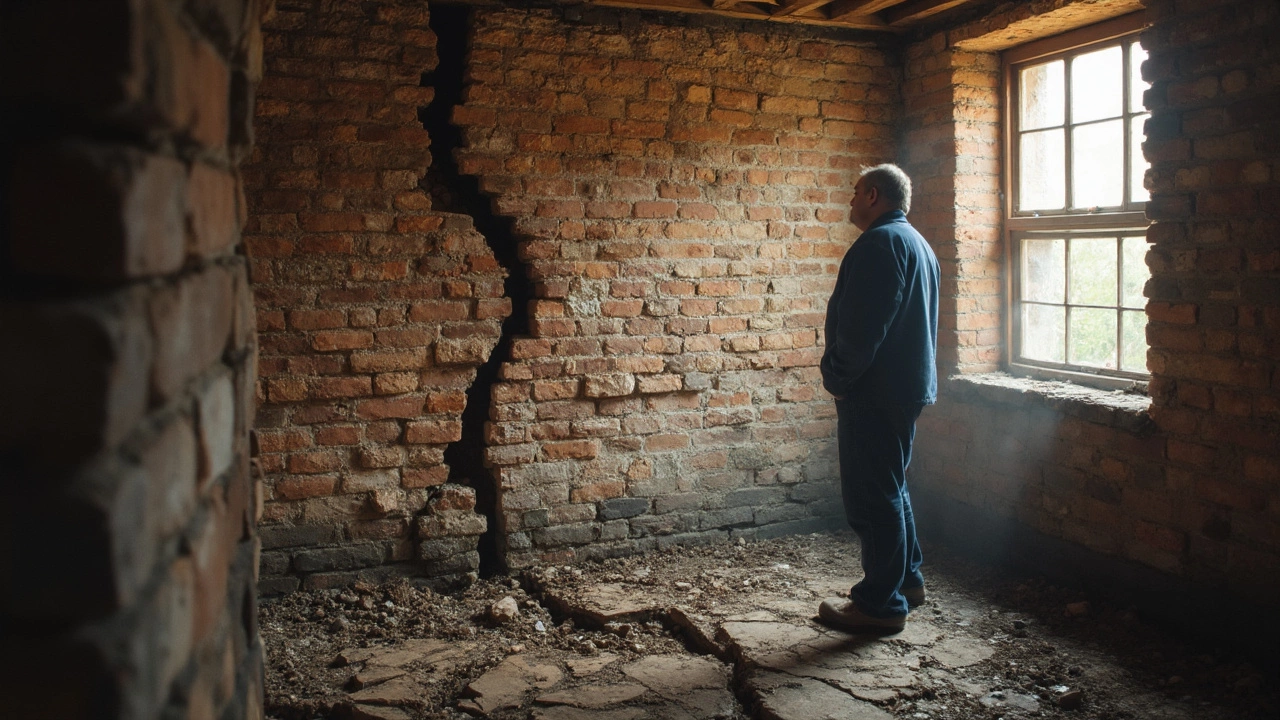Structural Cracks – Spot the Signs, Stop the Damage
If you’ve noticed a crack in a wall, floor or ceiling, you’re probably wondering if it’s just a cosmetic issue or a warning sign. Structural cracks aren’t just ugly; they can indicate movement in the building’s frame, moisture problems, or even foundation failure. Ignoring them can lead to bigger repairs down the line, so it’s worth understanding what causes them and when to call in a professional.
What Usually Causes Structural Cracks?
Most cracks start because the building shifts a little. Common triggers include:
- Foundation movement: Soil expands when it gets wet and contracts when it dries, pulling the foundation in different directions.
- Moisture changes: Leaks or high humidity can weaken plaster and drywall, making them more prone to cracking.
- Temperature swings: Metal and wood expand in heat and shrink in cold, which can stress joints and cause hairline splits.
- Poor construction: If the framing wasn’t level or the concrete was rushed, cracks can show up early and grow over time.
- Settling: New builds often settle for the first few years. That settling can create horizontal or diagonal cracks in walls.
Knowing the source helps you decide whether a quick fix will do or whether you need a deeper repair.
When Does a Crack Need a Professional?
Not every crack is an emergency. Here’s a quick cheat‑sheet to tell you when to pick up the phone:
- Width over 1/4 inch (6 mm): Anything wider than a pencil line usually means movement that’s beyond simple plaster repair.
- Cracks that keep growing: If a crack gets longer or wider over a few weeks, it’s a sign of ongoing movement.
- Diagonal or stair‑step patterns: Those often point to foundation issues rather than surface drying.
- Located near doors or windows: Gaps that cause doors to stick or windows to jam suggest frame distortion.
- Accompanied by doors or windows that won’t close: That’s a clear hint the whole structure is shifting.
If any of these apply, get a structural engineer or a qualified builder to assess the damage. They’ll check the foundation, look for moisture intrusion, and recommend the right repair method.
For deeper insight, check out our related guides:
Foundation Problems: Proven Solutions for Long‑Lasting Home Stability walks you through spotting and fixing foundation cracks before they spread.
Major Foundation Issues: Recognizing Structural Damage Signs and Solutions breaks down the warning signs that most homeowners miss.
Most Expensive Foundation Repairs: Your Guide to Piering, Underpinning & Replacement explains the cost side of big‑ticket fixes, so you can budget wisely if you’re facing serious work.
In many cases, a simple injection of epoxy resin can seal small cracks and restore strength. For larger gaps, you might need steel reinforcement or a new concrete footer. The key is to act early – the longer you wait, the more the crack can widen and affect other parts of the house.
Lastly, prevention matters. Keep gutters clear, manage landscaping drainage, and control indoor humidity with a dehumidifier if needed. Regularly inspecting your home for new cracks, especially after heavy rain or a freeze‑thaw cycle, can catch problems before they become costly repairs.
Structural cracks don’t have to be a nightmare. With a quick visual check, the right knowledge, and a professional’s opinion when needed, you can keep your home solid and safe for years to come.
How to Spot Signs of Water Damage in Your Home's Foundation
- Gavin Whitaker
- |
- |
- 0
Curious about the warning signs of water damage in your home's foundation? Discover how to identify issues, from sneaky cracks to that musty basement smell, before it becomes a disaster.
View moreWhat Does a Bad Foundation Crack Look Like? Spot the Real Warning Signs
- Gavin Whitaker
- |
- |
- 0
Ever wondered if that crack in your basement wall means big trouble? This article covers what truly dangerous foundation cracks look like, how to tell them apart from harmless ones, and what steps to take next. We’ll break down common crack patterns, the red flags that spell structural risk, and simple tests you can do yourself. By the end, you’ll know what to watch for and when to call in a pro. Don't let a small crack turn into a money pit.
View more
